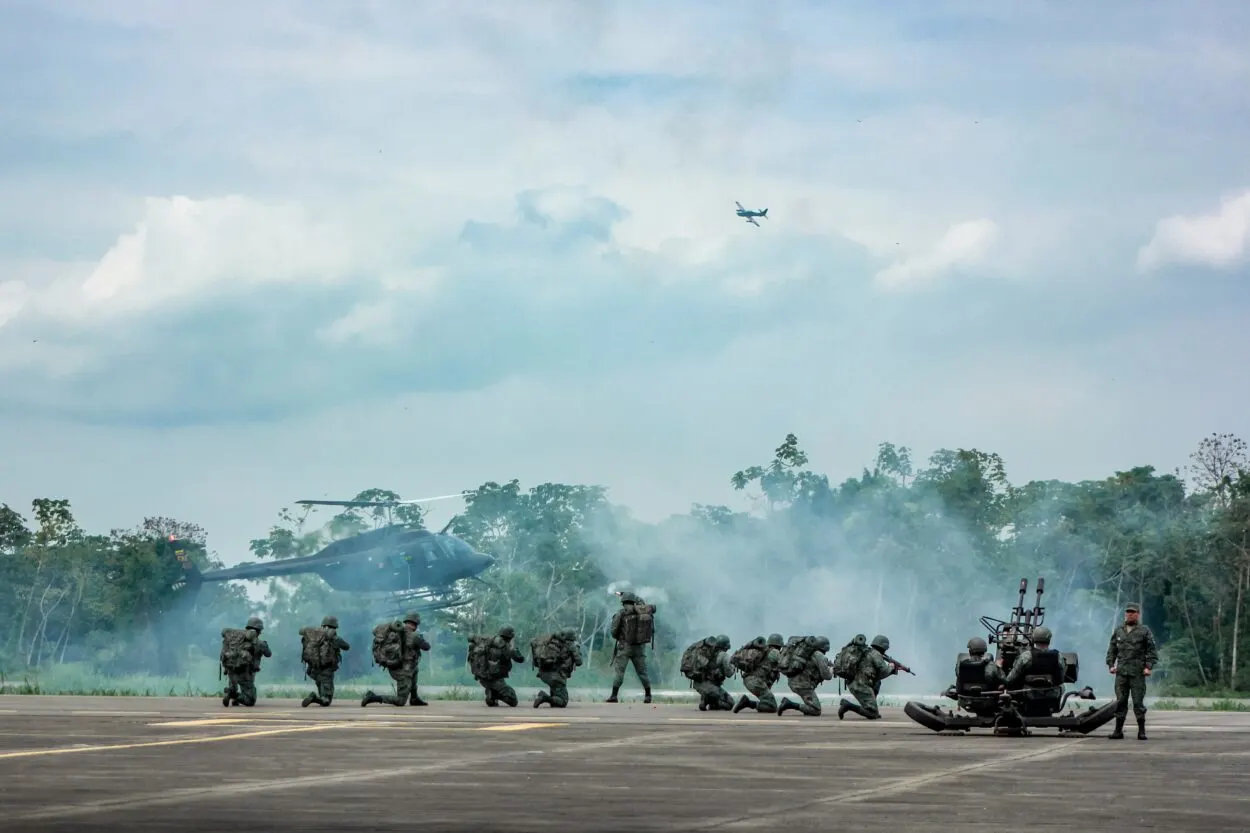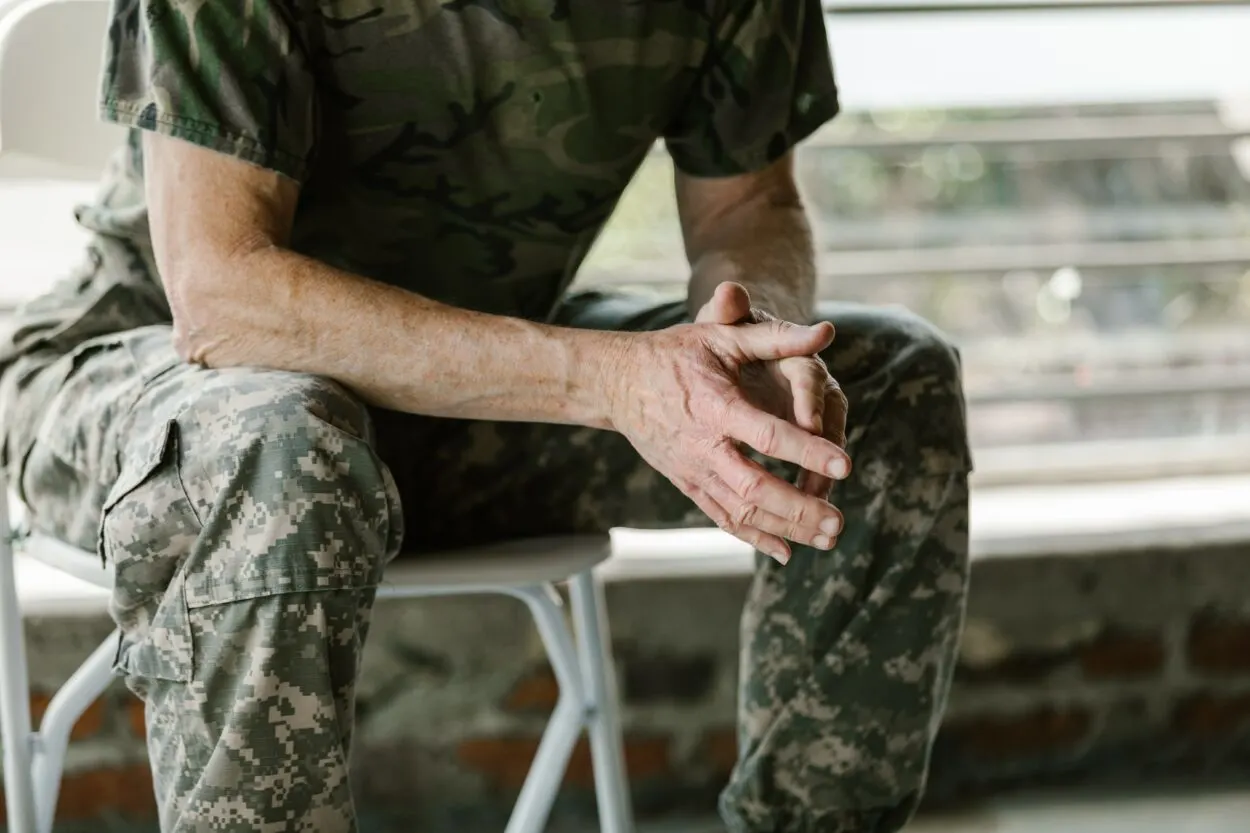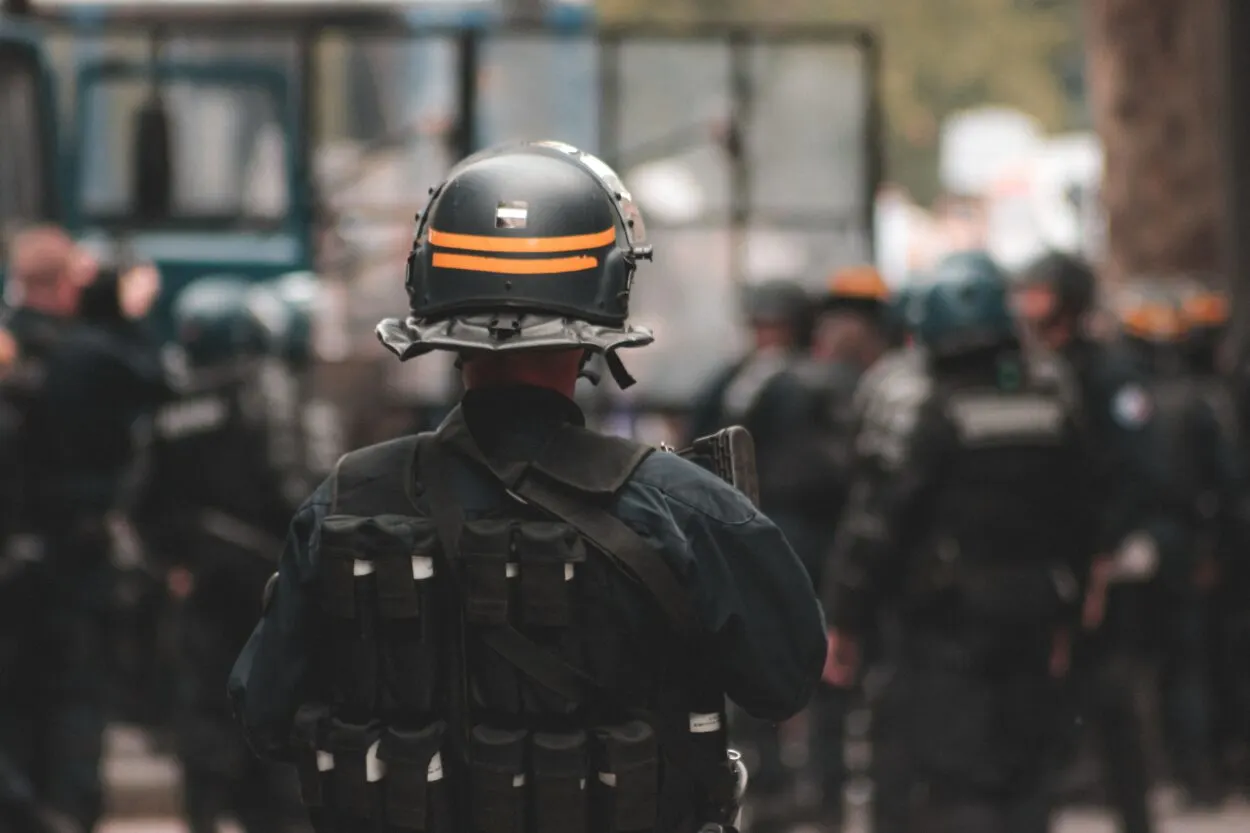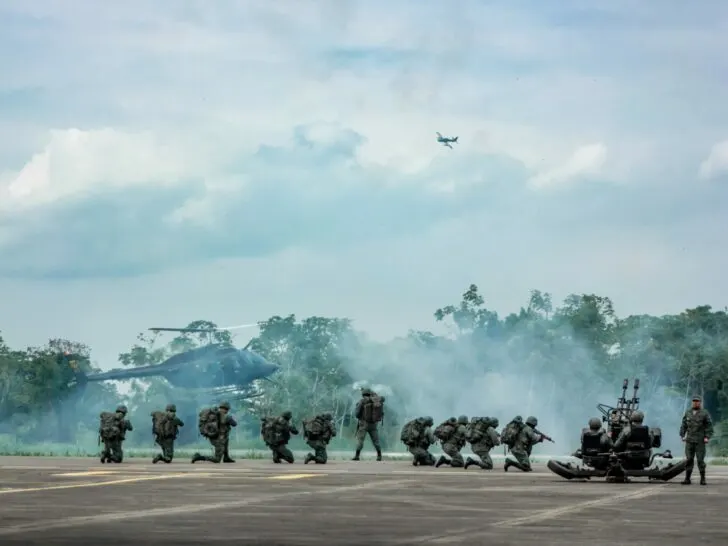No nation on earth does not have trained warriors guarding its borders and populace against both internal and external dangers.
An infantry soldier defends the nation from threats that may arise on the ground while serving in the field. In addition to helping with reconnaissance and mobilizing men and weapons to support the operation as the ground combat force, it captures, destroys, and dissuades opposing forces.
The Army infantry and the Marine infantry are fundamentally different from one another in terms of how they operate.
Army infantry exclusively uses land and air for combat support, whereas Marine infantry uses sea, land, and air. The Army controls an area, but the Marine Corps invades other countries.
Keep reading to know more about USMC and Army infantry, and the differences that sets them apart. Let’s begin!
What Is An Infantry?
The Infantry plays a crucial role in the Army; whenever there is a need for battle or peacekeeping, our Infanteers take the lead. Soldiers in the infantry are prepared for every situation through training.
The word is derived from Latin, from which English also obtains infant, from earlier Italian infanteria, and from Middle French infanterie. Infantryman, a phrase for a single soldier, wasn’t first used until 1837.
The term refers to both troops equipped with automatic rifles and rocket launchers in modern times as well as ancient forces using hand weapons like the sword and spear.
Since ancient times, the infantry has been the largest component of Western armies, but the cavalry briefly held sway during the feudal era.
Military Training

All enlisted personnel undergo basic military training, which involves classroom and field instruction and covers tactical and survival skills, physical fitness, military life and customs, and weapons instruction.
The majority of infantry training is conducted in the field in realistic combat situations, while some training does take place in the classroom.
An infantry service member is always in training. Infantry soldiers regularly engage in squad maneuvers, target practice, and war games to keep their abilities sharp.
Soldiers can practice scouting, troop movement, surprise attacks, and capturing tactics during war games that don’t use real ammunition.
What Is An USMC Infantry?
The core of the Marine ground units is the infantry. Infantry Marines are taught to track down, approach, and kill the adversary using fire and maneuver, or to fend against the enemy’s attack with fire and close quarters.
Each infantry unit’s primary scouts, assault troops, and close combat forces are riflemen.
After recruit training, enlisted United States Marines move on to the School of Infantry for their initial military training. The IMC (Infantry Marine Training), formerly known as the ITB (Infantry Training Battalion), changed from a 59-day training to a 16-week term.
All Marines had combat training throughout recruit training prior to the introduction of regular infantry training in the Marine Corps in 1953. In that year, Camp Lejeune and Camp Pendleton each received an Infantry Training Regiment.
Classroom education, practical application, and live-fire training are all used to complete the program.
The Marine Combat Instructors at SOI maintain continuity and uniformity throughout the process of instructing and guiding new Marines.
The types of training involved are as follows.
| Types of Trainings in USMC | Description |
| Infantry Training Battalion | The goal is to prepare Marines for entry-level infantry military occupational specialty through training and qualification. |
| Marine Combat Training | Marines who are not in the infantry are taught the fundamental fighting techniques throughout this 29-day school. |
What Is An Army Infantry?

The Infantry plays a crucial role in the Army; whenever there is a need for battle or peacekeeping, our Infanteers take the lead.
Due to the Army’s higher funding, their infantry soldiers receive extensive training with highly advanced weapons.
They receive comprehensive training in all facets of combat. On the other hand, the marine infantry is trained as expeditionary forces that operate from the sea and land from ships.
Military forces that participate in ground warfare on foot are known as infantry.
Light infantry, mountain infantry, mobile infantry, motorized infantry, mechanized infantry, bicycle infantry, airborne infantry, airmobile infantry, and marine infantry are some of the types of infantry that are typically used.
Major Differences Between USMC Infantry And Army Infantry
While there are many similarities between Marine or USMC infantry and Army infantry, there are also significant distinctions in terms of size, purpose, and responsibilities.
Army infantry exclusively uses land and air for combat support, whereas Marine infantry uses sea, land, and air. The Army controls an area, but the Marine Corps invades other countries.
Compared to the Marine Corps infantry, the Army infantry is far larger. Infantry in the Marine Corps is smaller, but because they are more agile, they can be quickly deployed and prepared for battle.
Although it takes time for the Army infantry to organize and mobilize, there are still tiny, elite units assigned to quick-response missions all around the world.
The Secretary of Defence, Secretary of the Army, and commanders at the divisional level all provide instructions to the Army infantry, which is a subset of the Army chain of command.
However, the Marine Corps is commanded by the Department of the Navy, and Marine Corps commanders hold top Department of Defence positions in addition to the Commandant of the Marine Corps.
Training: Army vs. Marine Infantry
Due to the Army’s higher funding, their infantry soldiers receive extensive training with highly advanced weapons. They receive comprehensive training in all facets of combat.
On the other hand, the marine infantry is trained as expeditionary forces that operate from the sea and land from ships.
The Marine infantry does not have the logistical backup that the Army does from the headquarters. Marine infantry must provide for themselves, maintain a lean physique, and utilize resources wisely.
Before moving on to advanced training that is dependent on the MOS (Military Occupational Specialty), new Army recruits must complete 10 weeks of basic training boot camp.
The fundamental instruction is divided into three stages.
| MOS Training Stages | Description |
| Red Phase | The objective is to engrave discipline and teamwork. |
| Blue Phase | Soldiers disarm IEDs (improvised explosive devices) as they learn to maneuver and improve their rifle marksmanship. |
| White Phase | IEDs (improvised explosive devices) are disarmed by soldiers as they learn to maneuver and improve their rifle marksmanship. |
Other Terms Related To Infantry
Green Berets

For both service members and civilians, the Army’s “Green Berets” Special Forces soldiers are legendary.
They combat terrorists through covert, guerilla-style operations abroad. Teams of Green Berets can fight in urban areas, in the jungle, or even in the desert.
The Army’s “Delta” CAG and the CIA’s SAD can be reached through the Green Berets, one of the most elite organizations in the world. Depending on who is speaking, they have roughly the same street cred as Force Recon and numbered SEALs.
Army Corps

A corps is a military formation found in many armies, often led by a lieutenant general and made up of two or more divisions.
Due to the extensive fighting in World Wars I and II, many corps were united into armies, which subsequently organized into army groupings.
There are various Corps within the Army system. The seven combat functions—Manoeuvre, Fire Support, Air Defence, ISTAR, Mobility, Combat Service Support, and Command & Control—are supported by the Army Corps.
Conclusion
- The infantrymen of the American Army and American Marine Corps take great delight in being some of the biggest badasses on every block they roll into. Although they are distinct forces, they are more alike than different.
- Few soldiers practice amphibious warfare, although all Marines do. Instead, the majority of soldiers choose or are given a specialty in a certain type of terrain or combat, including mechanized infantry, airborne, ranger, or mountain.
- Usually, the Army receives new equipment before the Marine Corps. It switched to the M4 before the Marine Corps did, and soldiers are more likely to carry the most recent weapon accessories, such as hand grips, laser sights, and optical sights.
- Due to the Army’s higher funding, their infantry soldiers receive extensive training with highly advanced weapons. They receive comprehensive training in all facets of combat. Because they are an offensive force, the Marine Corps is thought to have some of the hardest training.

